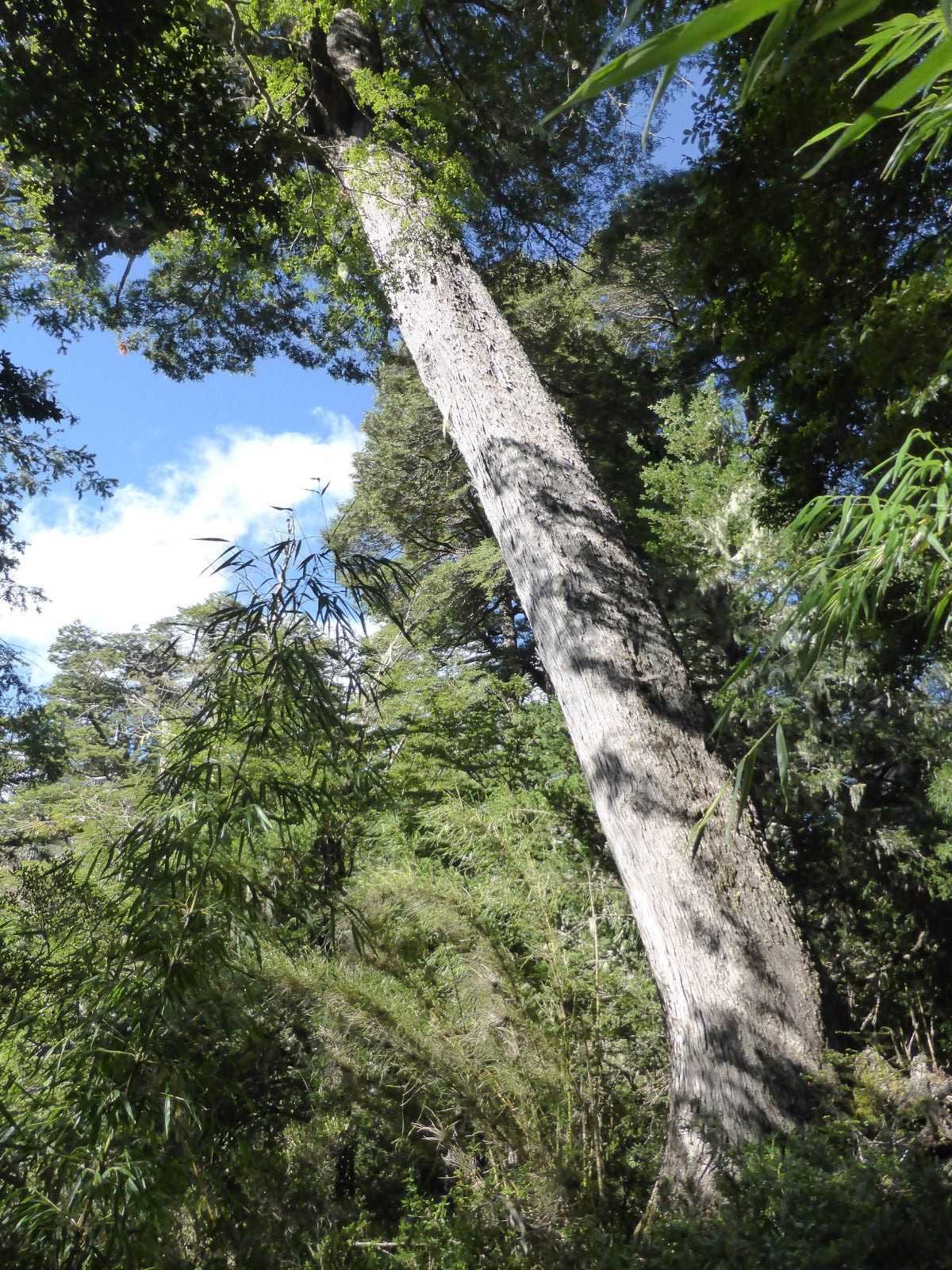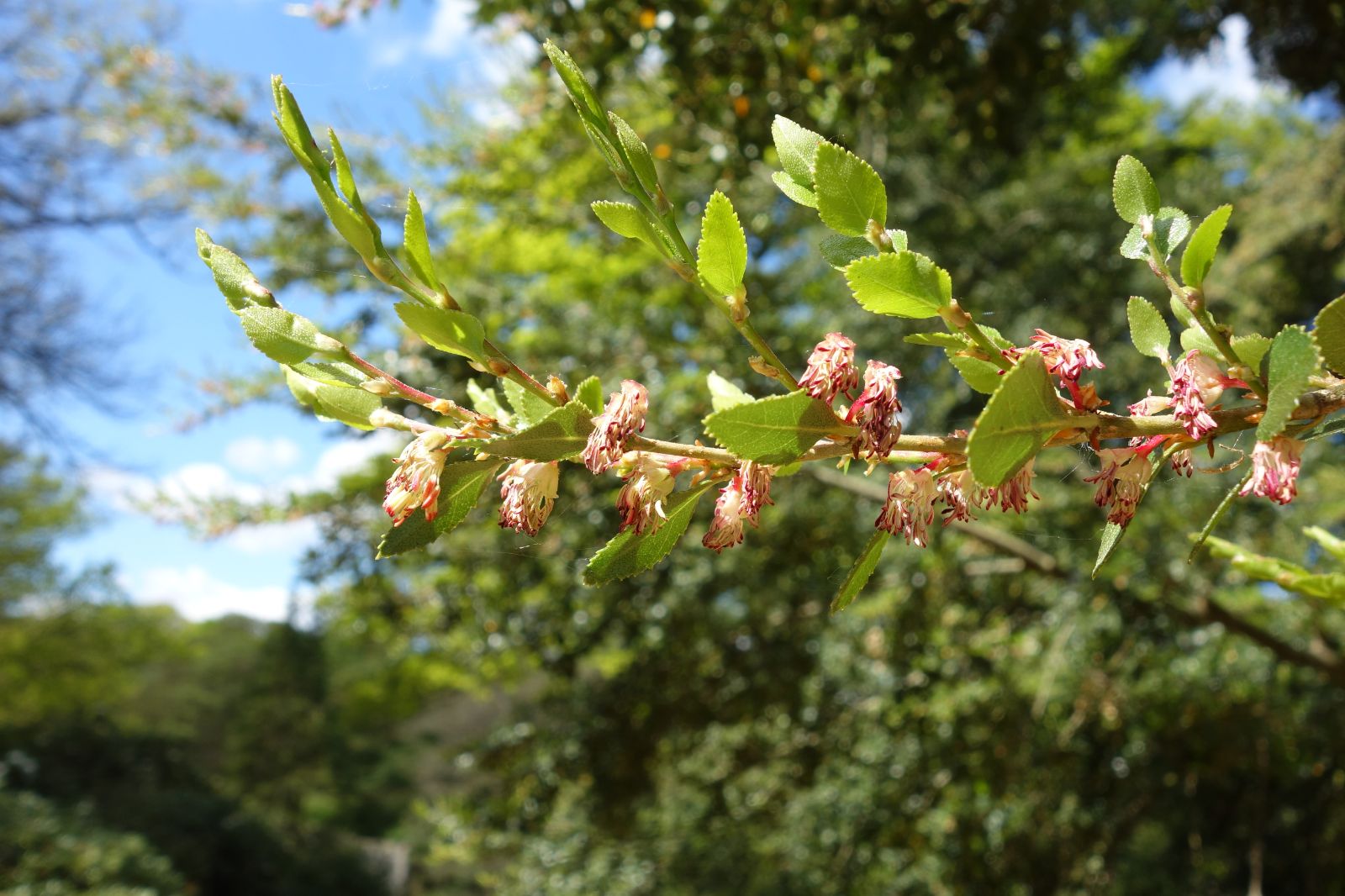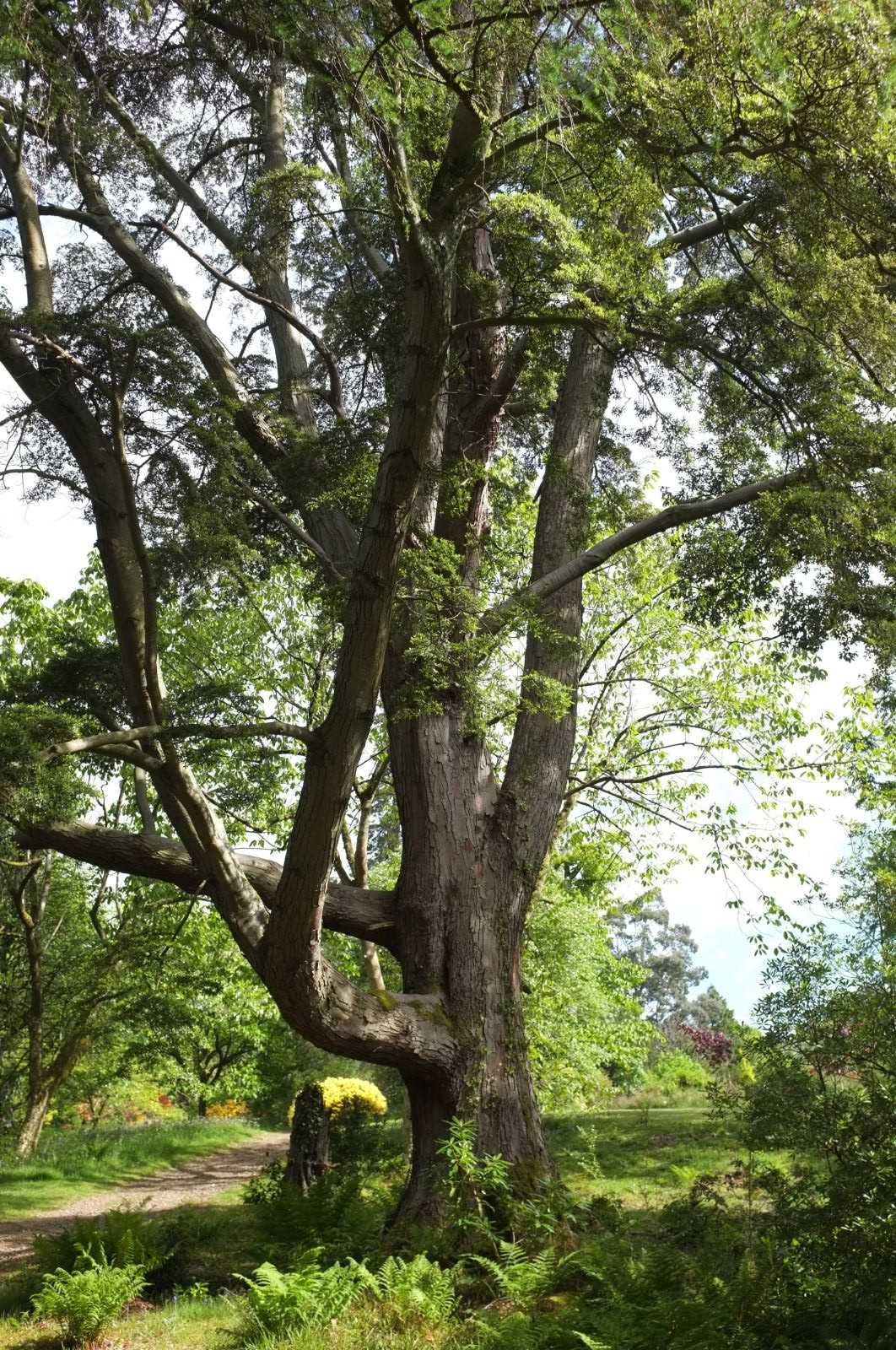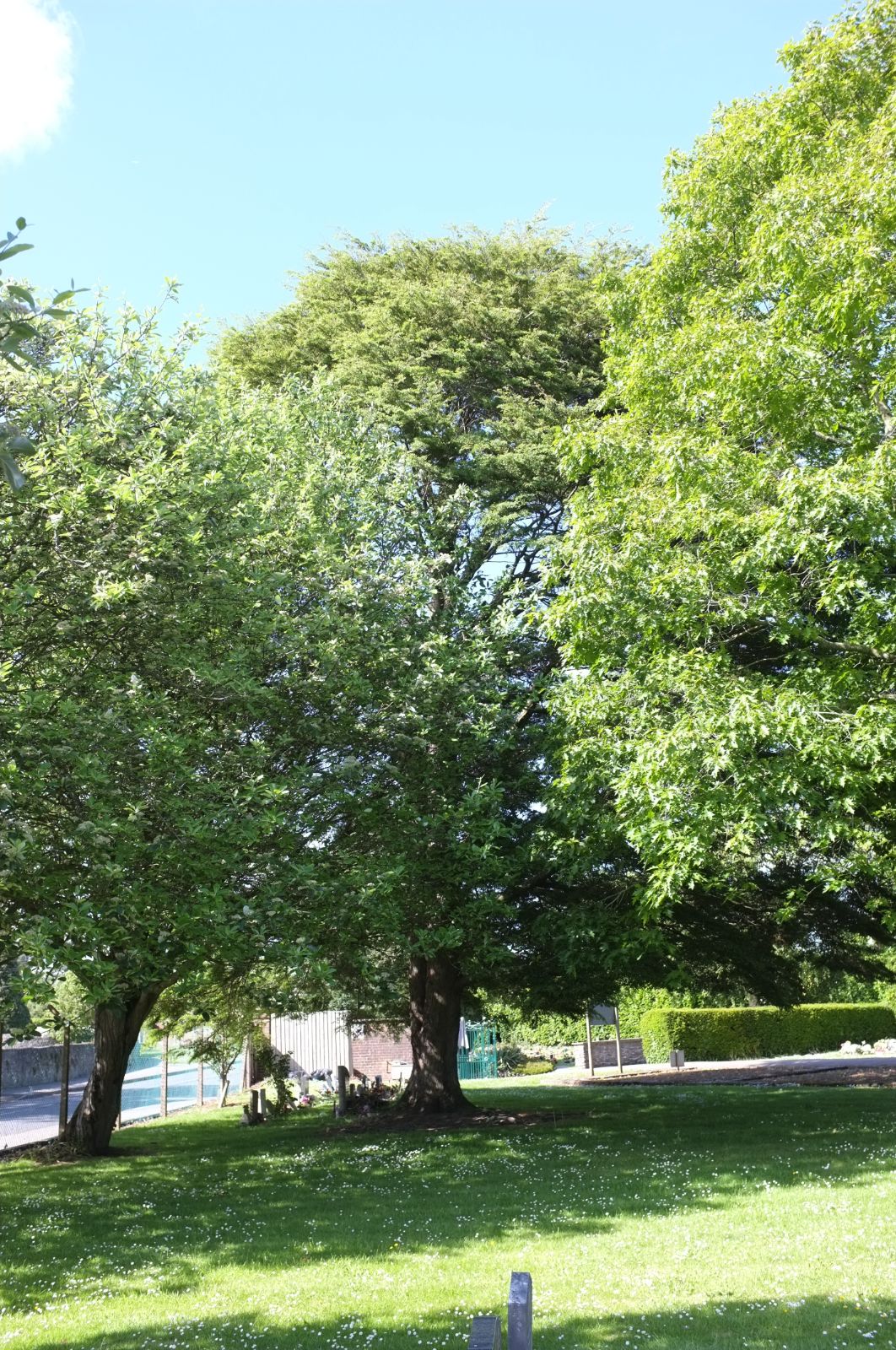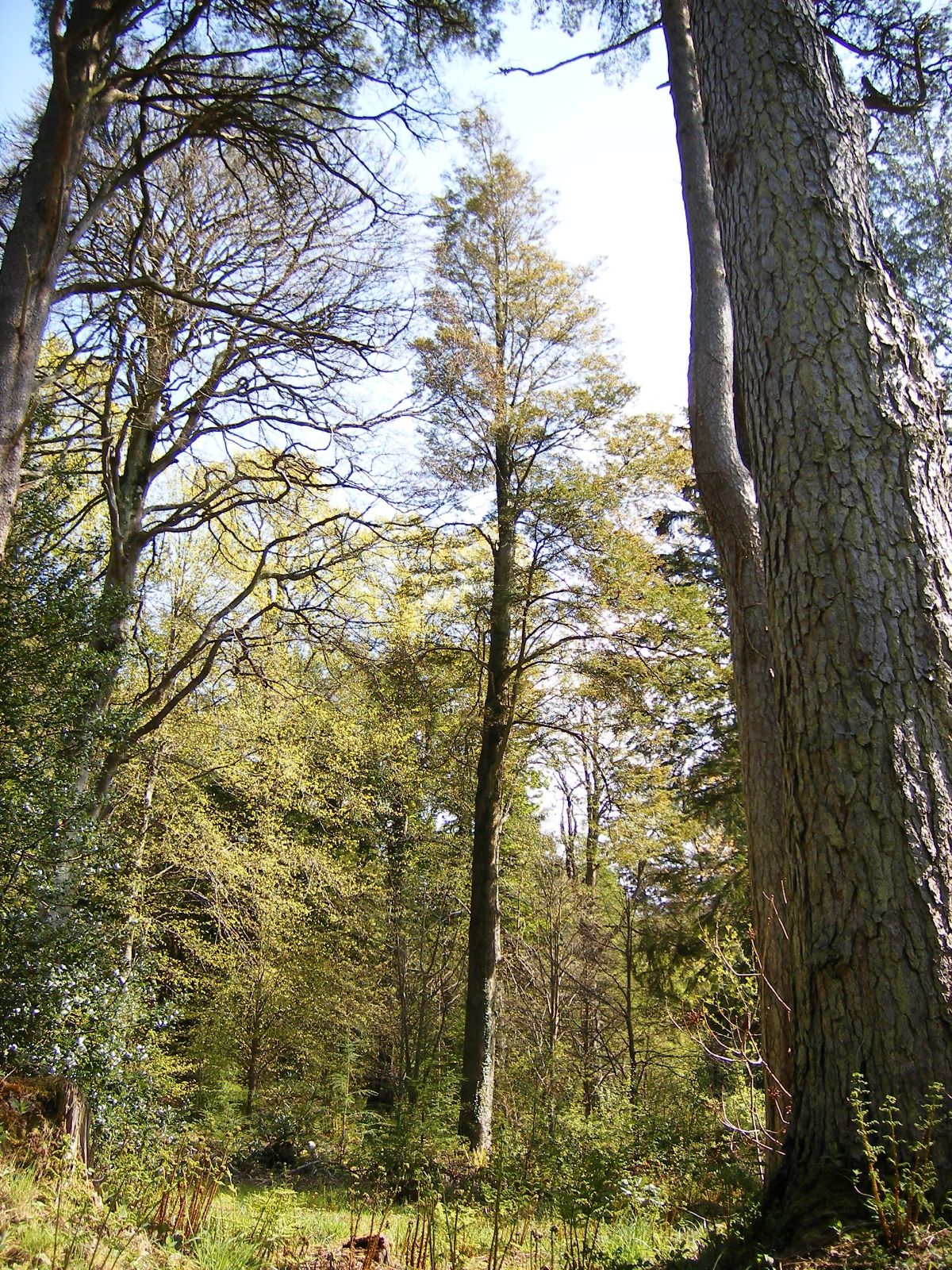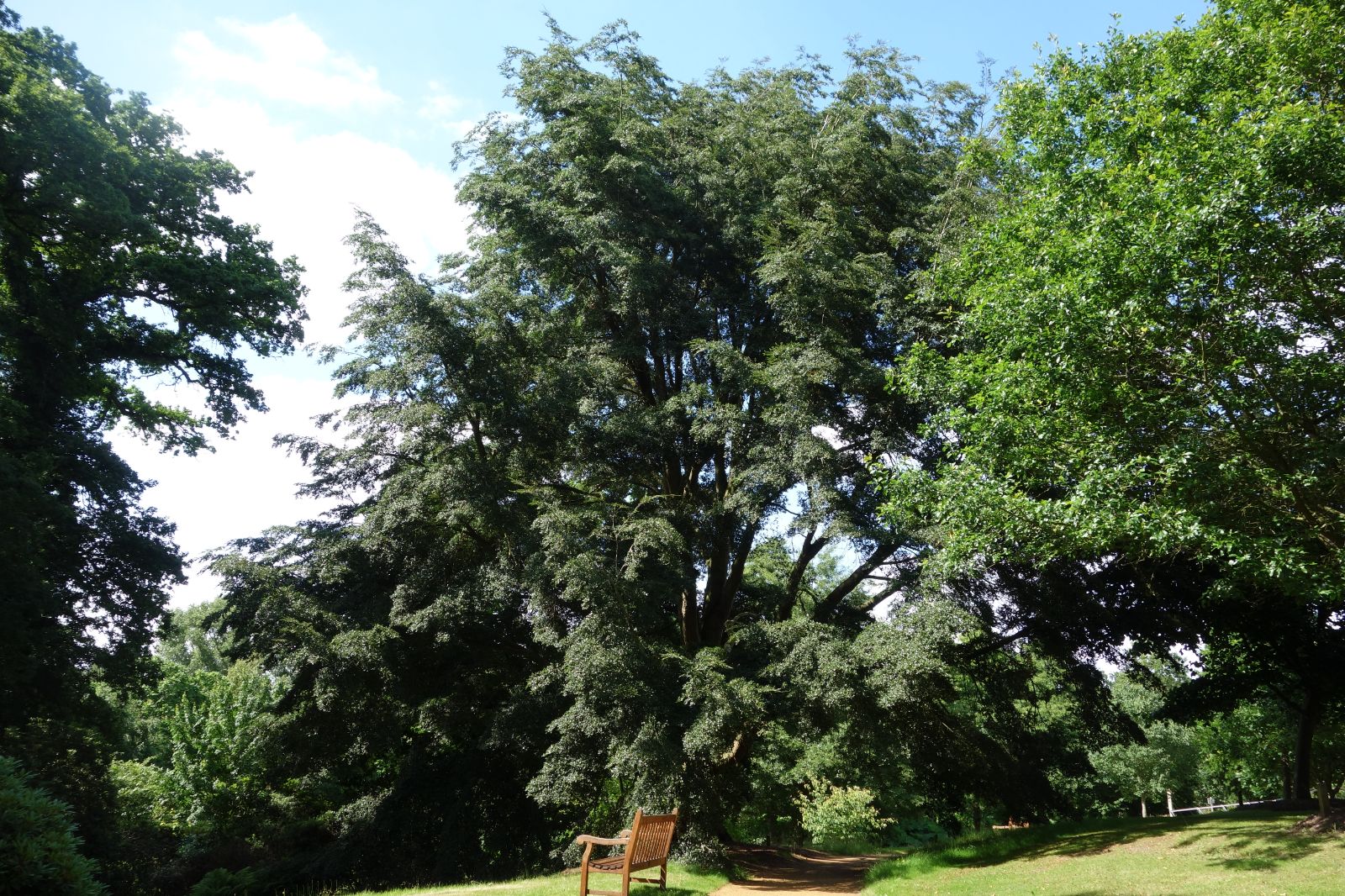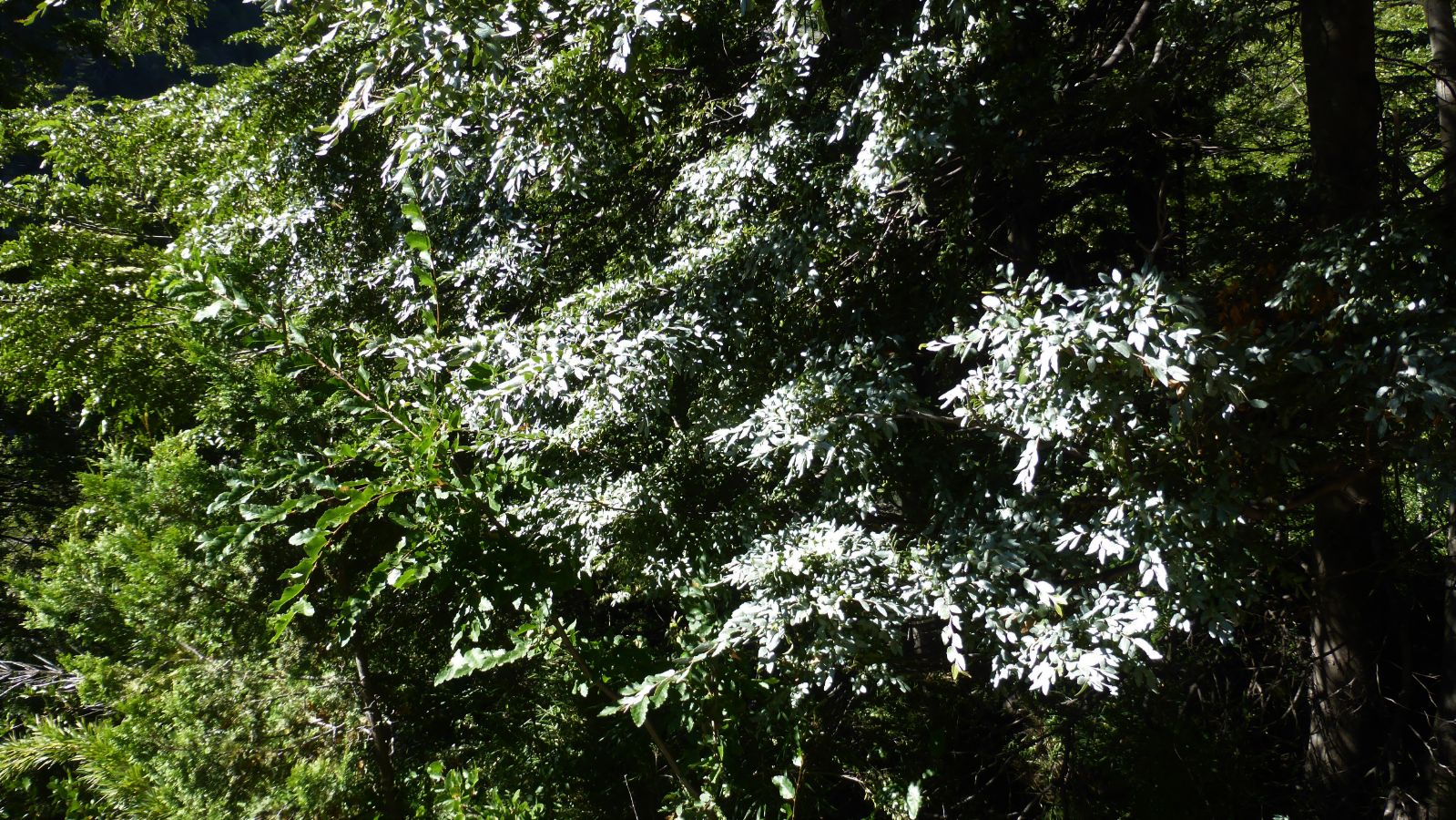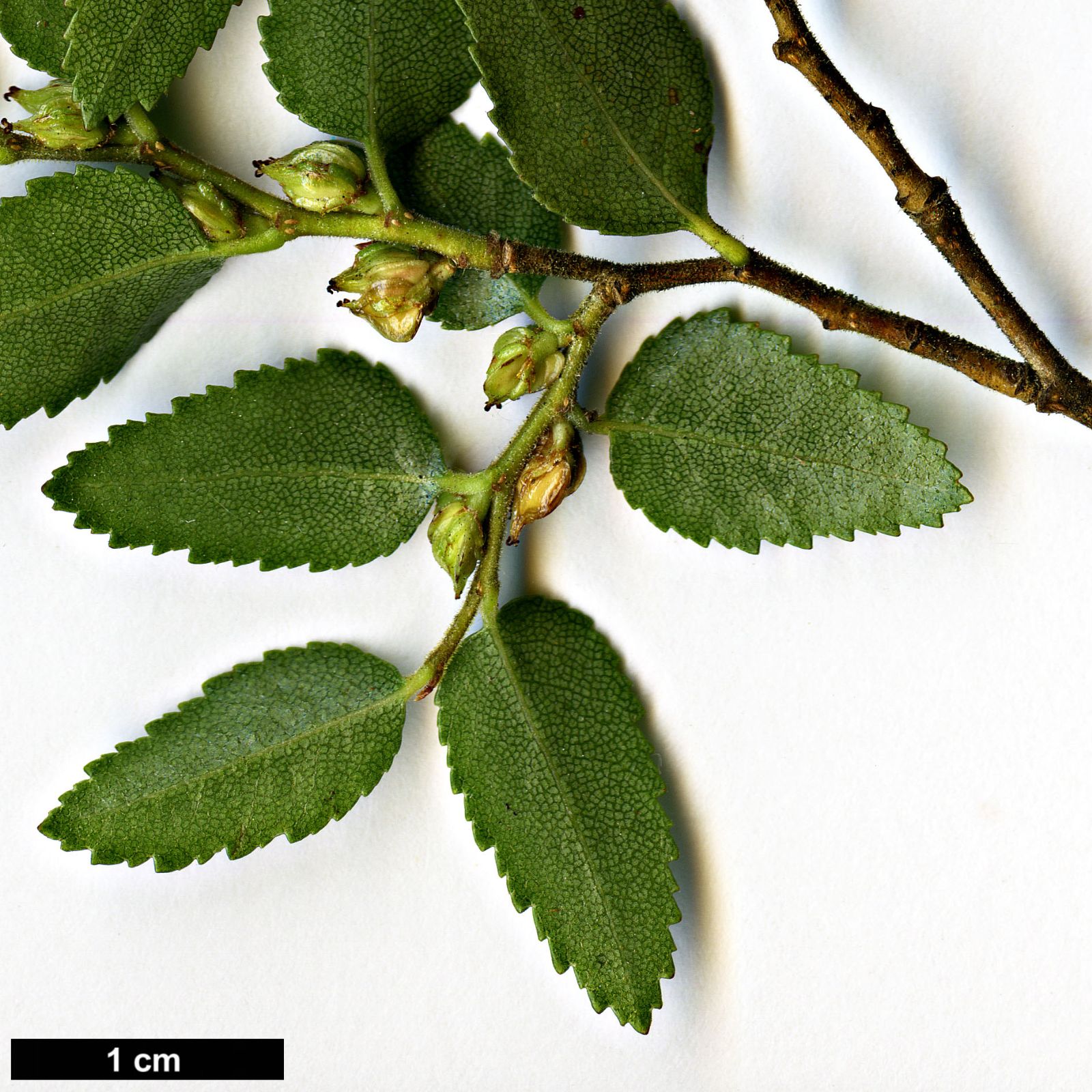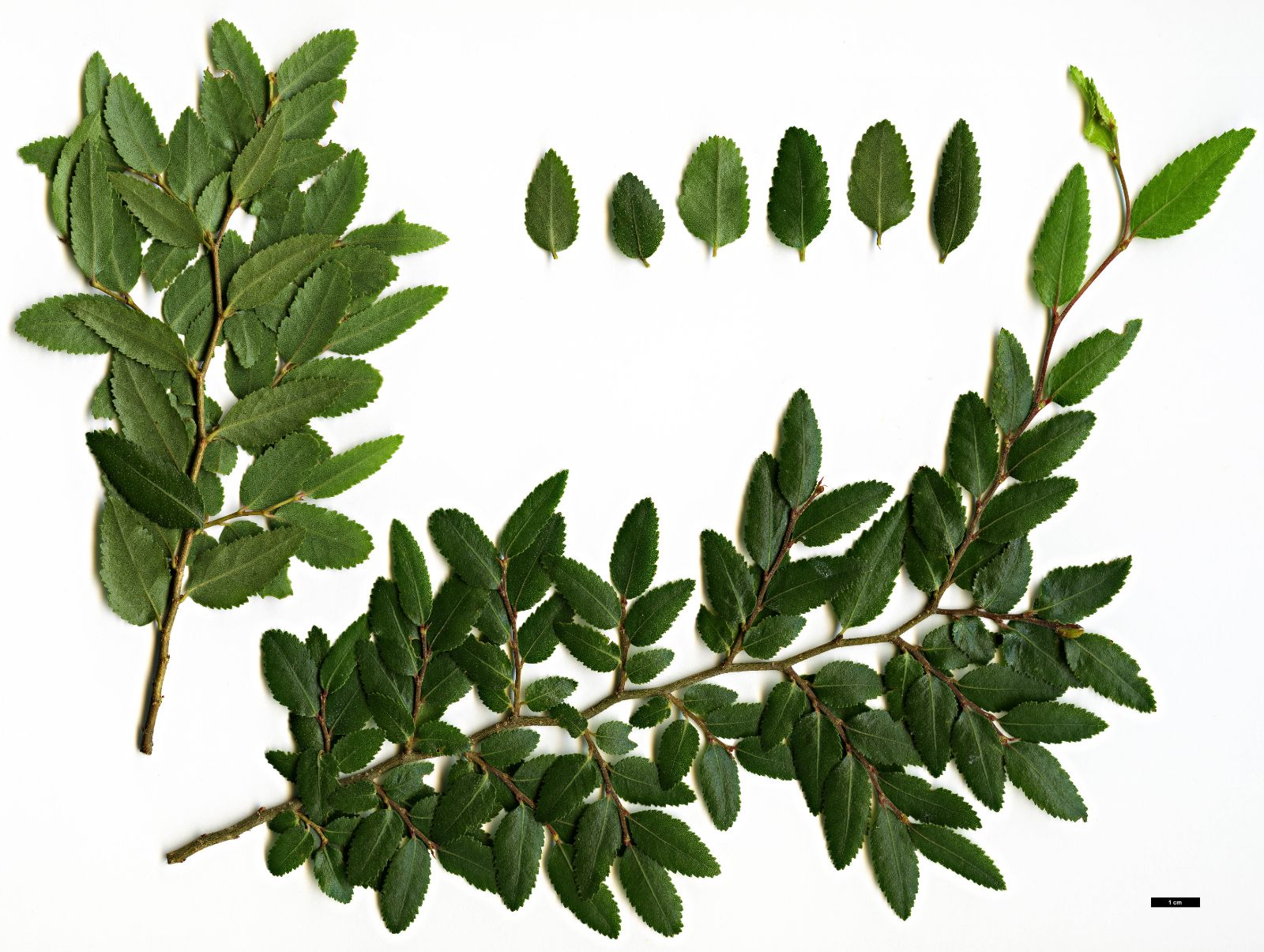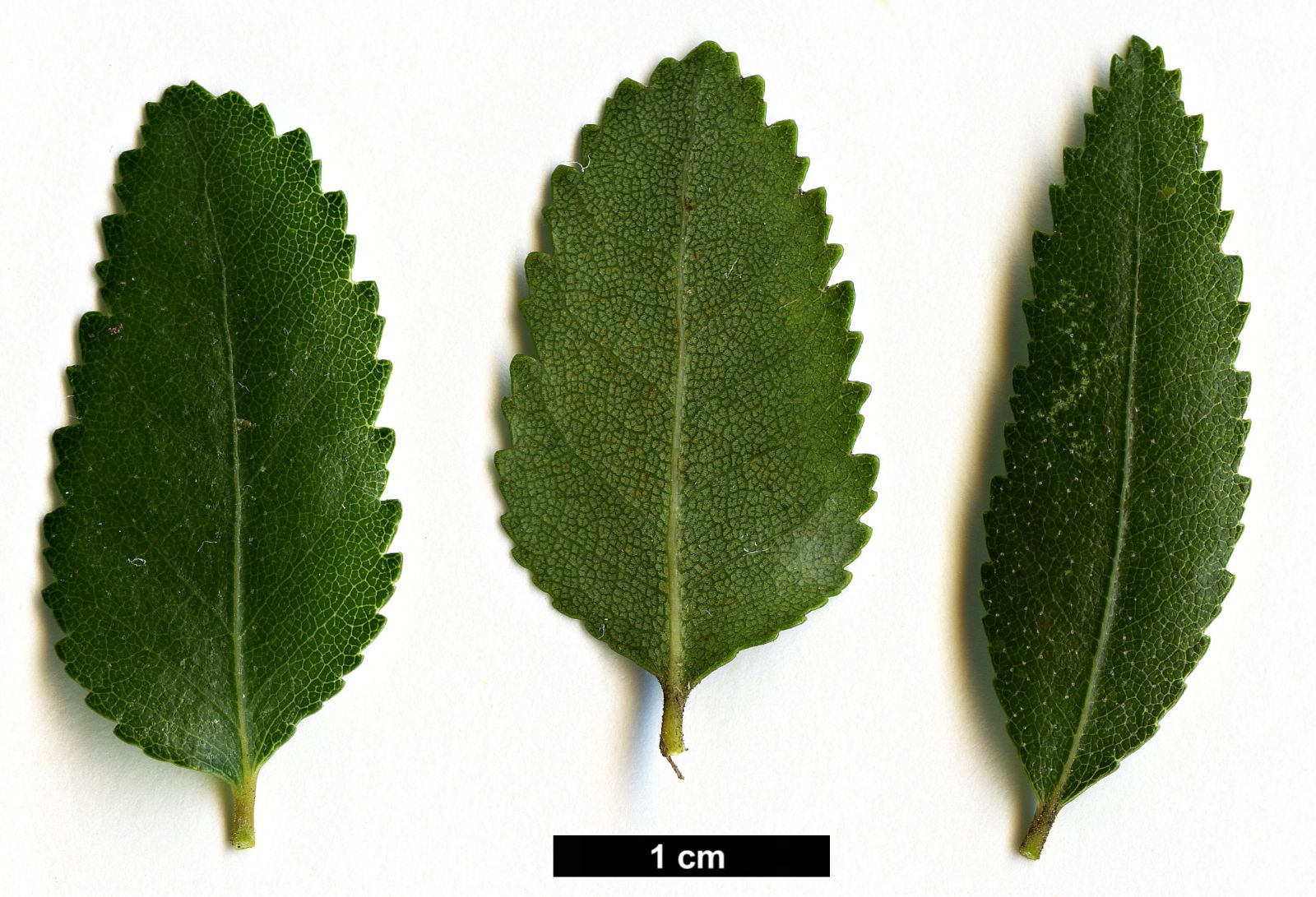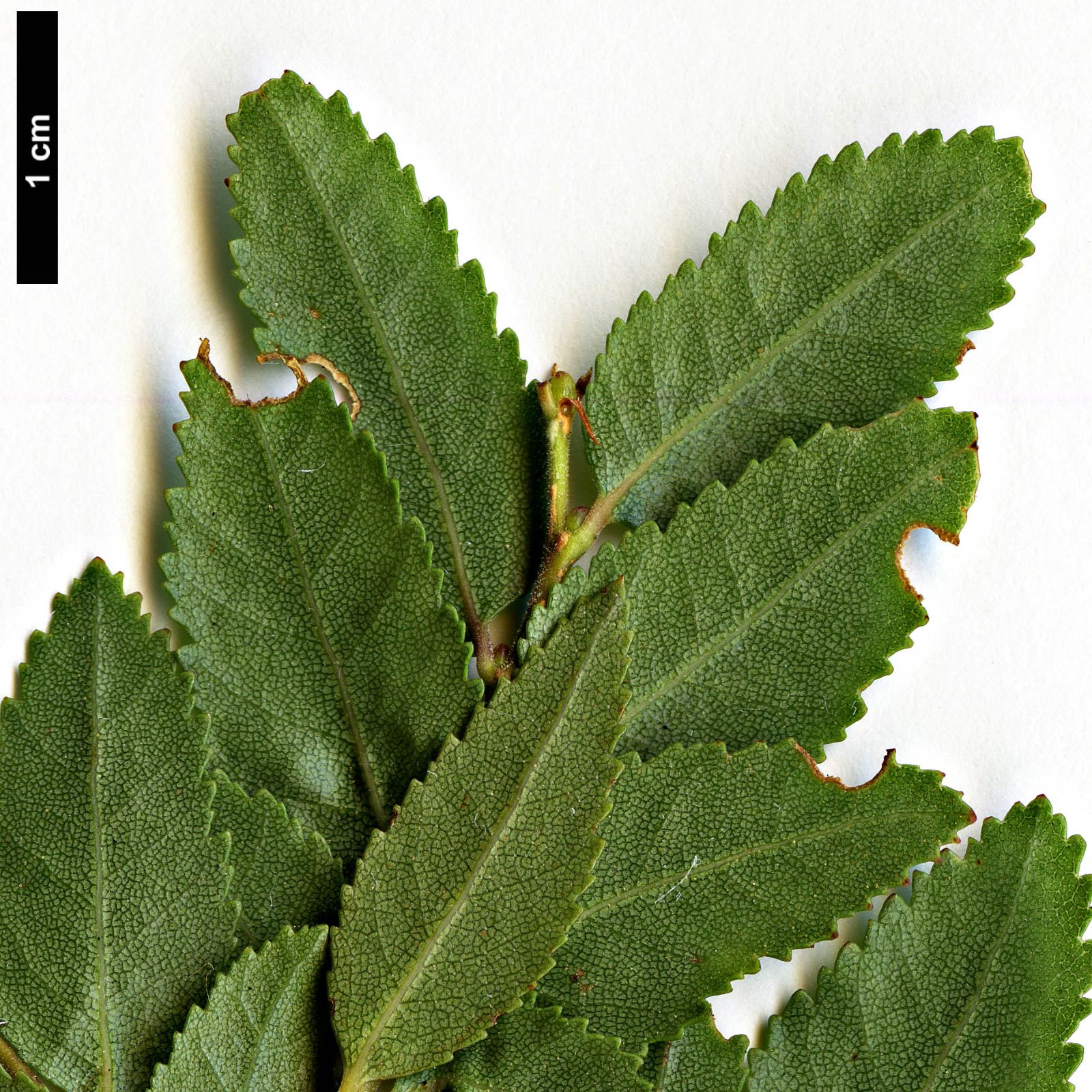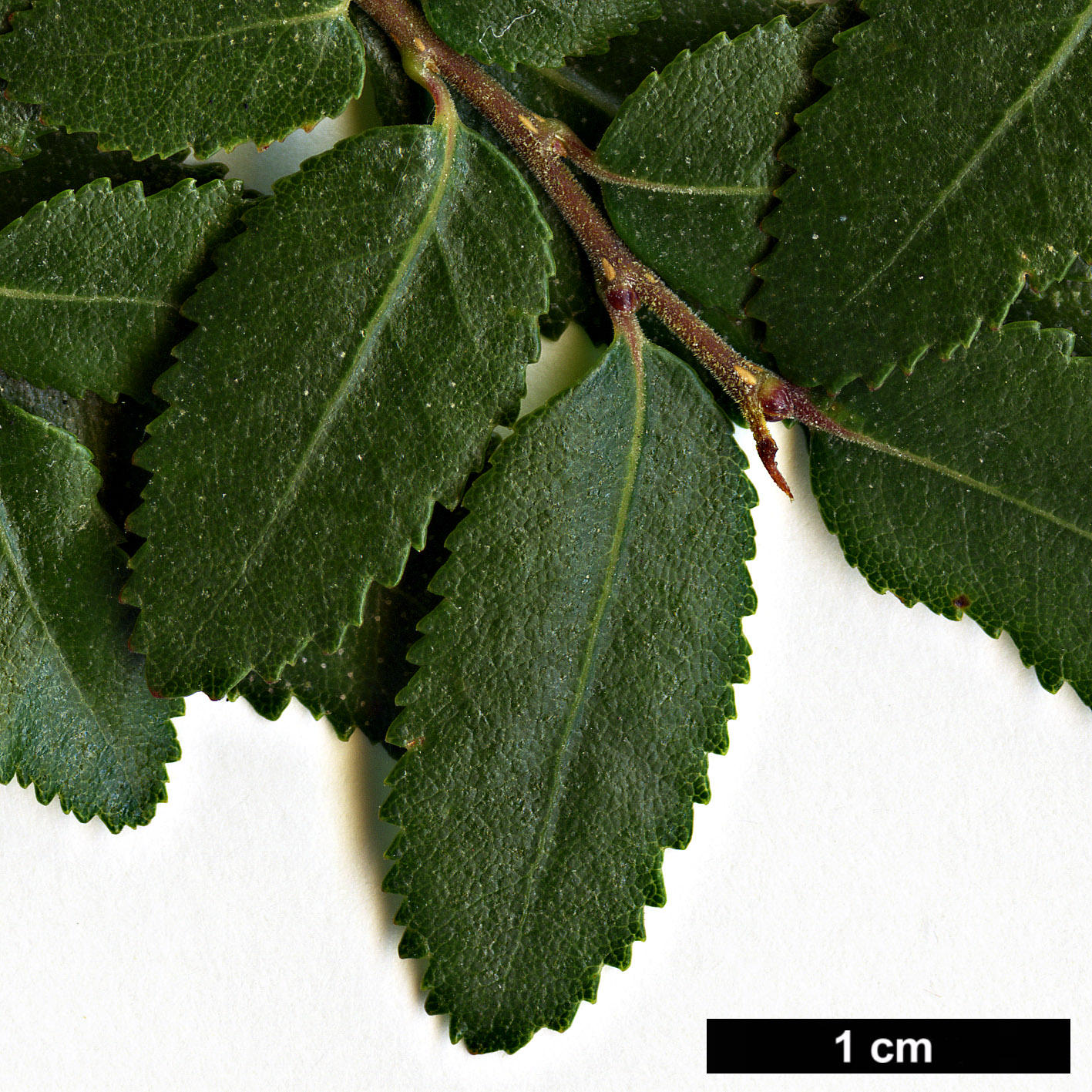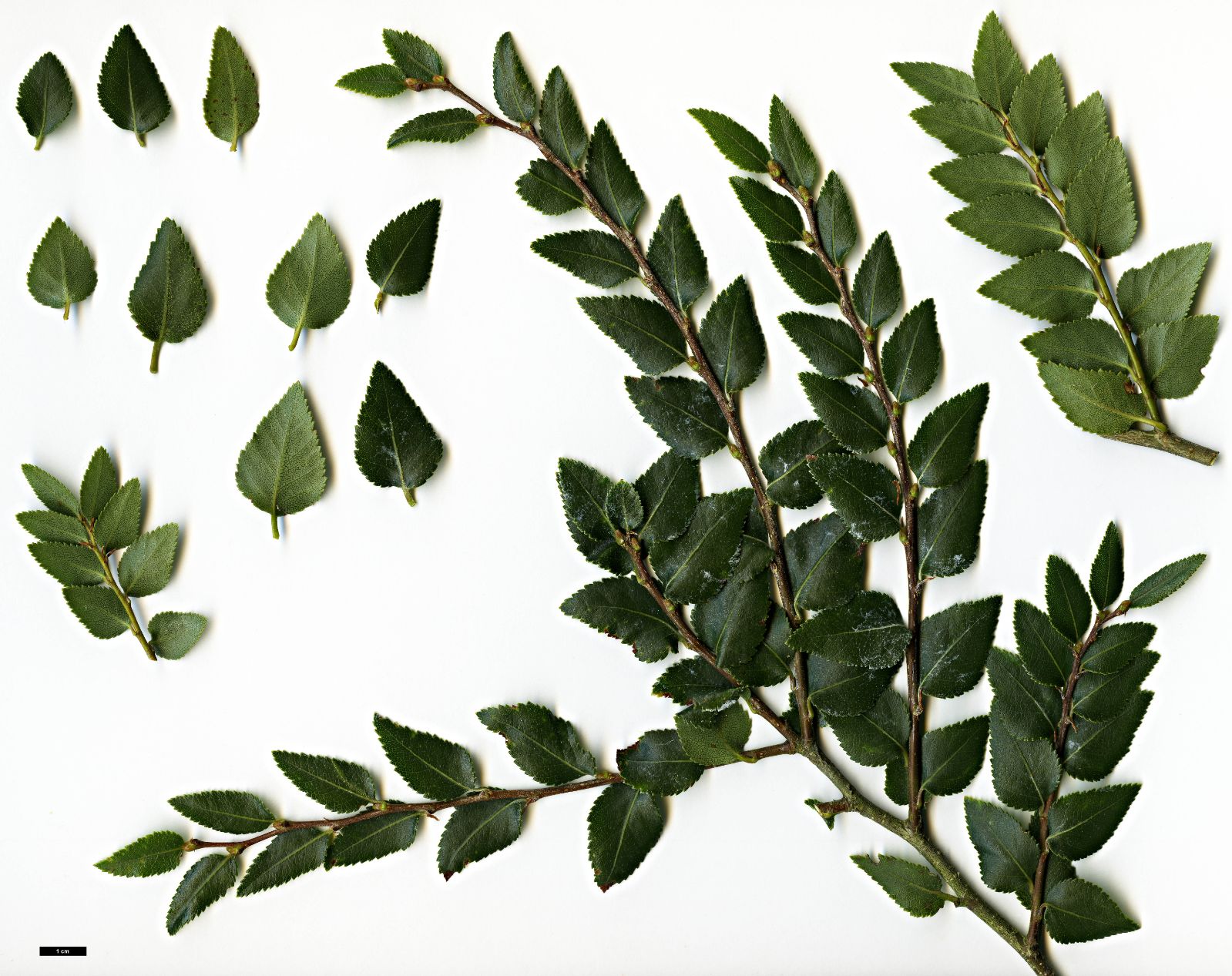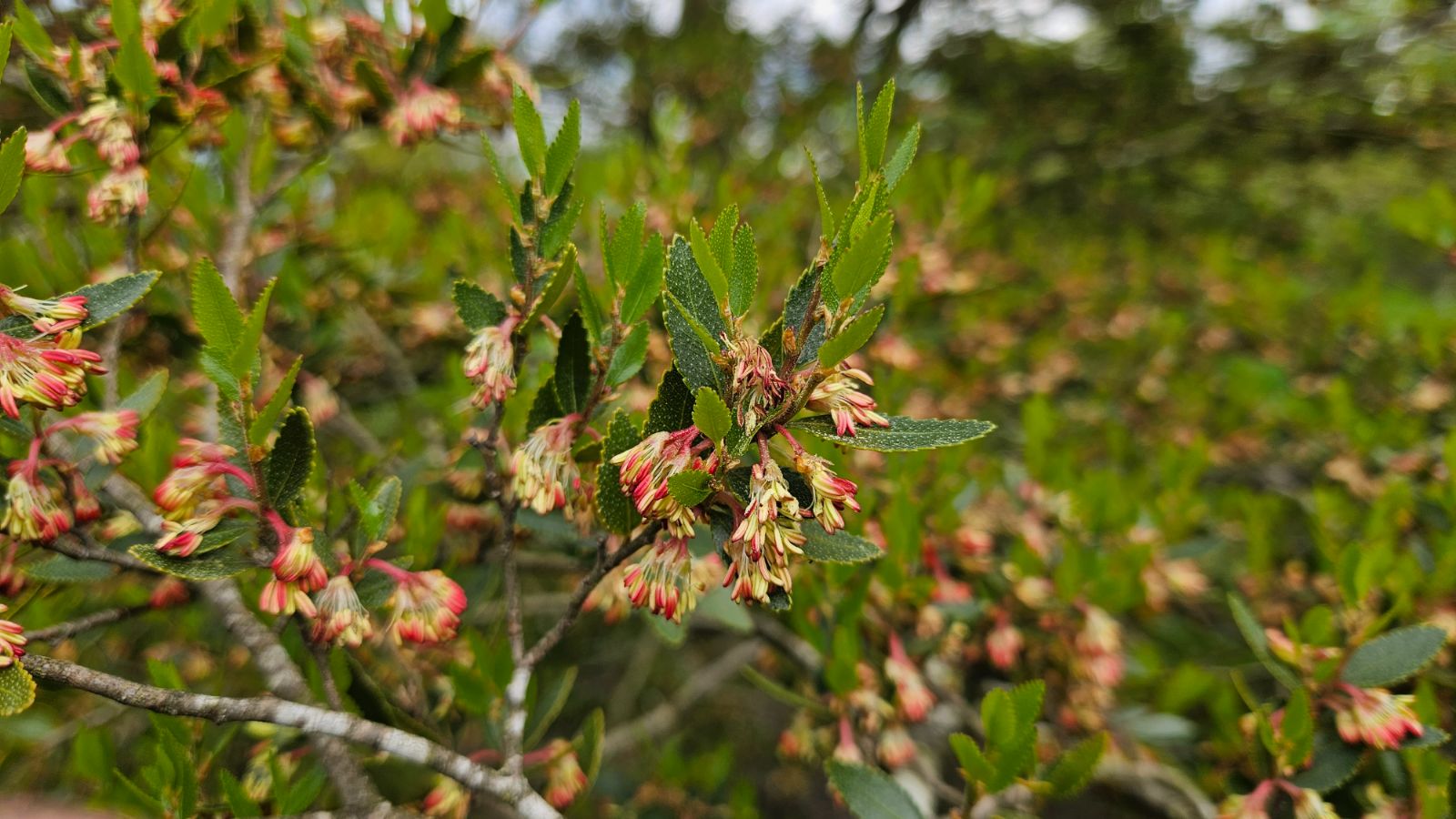Nothofagus dombeyi
Sponsor
Kindly sponsored by
Col. Giles Crisp
Credits
Owen Johnson (2020)
Recommended citation
'Nothofagus dombeyi' from the website Trees and Shrubs Online (treesandshrubsonline.
Other taxa in genus
- Nothofagus alessandrii
- Nothofagus alpina
- Nothofagus antarctica
- Nothofagus betuloides
- Nothofagus × blairii
- Nothofagus cliffortioides
- Nothofagus cunninghamii
- Nothofagus × dodecaphleps
- Nothofagus fusca
- Nothofagus glauca
- Nothofagus gunnii
- Nothofagus × leonii
- Nothofagus macrocarpa
- Nothofagus menziesii
- Nothofagus menziesii × obliqua
- Nothofagus moorei
- Nothofagus nitida
- Nothofagus obliqua
- Nothofagus pumilio
- Nothofagus solandri
- Nothofagus truncata
Evergreen tree to >40 m tall, with a dense but irregular habit and an often short or slanting bole, and a lifespan of up to 600 years. Young bark dark grey, with horizontal bands of pale lenticels; cracking after about 10 years and becoming rugged and more reddish, with large jagged scales. Young shoots red-brown, with a very short pubescence, slender (1–2 mm thick); buds small (c. 4 mm), conic, green-brown. Leaves plane, quite thick, ovate or ovate-lanceolate to narrowly triangular and tapering steadily at least on strong shoots towards a shortly pointed tip, 2–4 × 1–2 cm; dark glossy green above, paler bright green below, sometimes specked when older with minute blackish glands on both surfaces, but more densely beneath; chief veins inconspicuous on both sides, in about 5 or 6 pairs; marginal teeth fine and sharp and very irregular (almost double); petiole 1–2 mm long, pubescent. Male flowers mostly in 3s; stamens 8–13, bright red. Cupule 2–6 mm, with short, tooth-like appendages; nutlets 3. (Bean 1976; Nothofagus (2007–2008).
Distribution Argentina In the southern Andes near the Chilean border Chile O'Higgins, Maule, Bío Bío, Ñuble, La Araucanía, Los Ríos, Los Lagos and Aysén regions
Habitat Mountain forests at 700–1200 m, in high rainfall areas
USDA Hardiness Zone 7b
RHS Hardiness Rating H5
Awards AGM
Conservation status Least concern (LC)
Nothofagus dombeyi is a dominant tree in its native Andean and coastal cordillera forests forests, growing alongside the deciduous N. alpina and N. obliqua in most of its range (where it prefers areas with the highest rainfall), and alongside its evergreen lookalikes N. betuloides and N. nidita in the far south. It is perhaps the longest-lived of these species and is much valued as a timber tree (Nothofagus 2007–2008).
With its dense masses of tiny, glistening evergreen leaves, a really large Coigüe provides an aesthetic experience offered by no native northern hemisphere tree; a few of the Australian and New Zealand Nothofagus have even smaller leaves, but none of them show off this quality by making quite such large and majestic trees in maritime regions of north-west Europe. It is similarly distinct among its many compatriots in Chile and Argentina; ‘the largest and oldest in native forests in Chile are simply staggering. Exposed and emergent trunks are quickly bleached by the sun and the shining whitish bark, contrasting with the sea of dark foliage, is instantly diagnostic. The largest dwarf everything around them and no European tree, not even the largest and oldest Fagus sylvatica, can prepare you for your first meeting with an ancient Coigüe’ (T. Christian pers. comm. 2020).
N. dombeyi was introduced to Britain by F.R.S. Balfour of Dawyck, Scotland, who presented a large quantity of seeds to Kew in 1916 (Bean 1976); Dawyck itself remains one garden too frosty to grow this tree. Only four of these seeds germinated, but thanks to later importations, and the ease with which plants can be raised from cuttings and seed, the species has become a familiar ornamental across the UK and Ireland; it is by far the largest broadleaved evergreen tree hardy in these islands. The larger of a pair at Mount Usher in Co Wicklow, Ireland, which are believed to be two of the Kew seedlings but which were planted here as late as 1928, was 33 m × 1.69 m dbh in 2014, when the trunk had grown hollow; the tallest, at Muncaster Castle in Cumbria, was 36 m × 1.21 m dbh in 2013. These specimens are continuing to grow even bigger, but it seems highly unlikely that, even in these humid western microclimates, the species will rival either its longevity or its ultimate size in the wild; the Scottish champion (28 m × 1.40 m dbh in 2019), at Castle Kennedy in the extreme south-west of that country, is characteristic in having grown heavy limbs with weak forks from low on the bole, one of which has recently broken out, leaving a gigantic wound which may fatally weaken the tree. Growth, at least in the shorter term, is almost as good in drier and frostier parts of the UK and Ireland; a fine tree within woodland at Crathes Castle on chilly Deeside in Aberdeenshire was 28 m × 1.25 m dbh in 2019, and a particularly handsome specimen at St Roche’s Arboretum among the South Downs of West Sussex, with a long slightly slanting bole, was 30 m × 0.99 m dbh in 2010 (Tree Register 2020). Sufficient acid topsoil has built up over the chalk here (and been imported) for this member of a universally calcifuge genus to be completely happy. The soil at Mount Usher also tends to be mildly alkaline, and the species thrives in various other Irish gardens which are situated above limestone, such as at Birr Castle in Co Offaly, but this may be obviated by high rainfall. When conditions are suitable, as in Ray Wood, it self-sows freely.
Coigüe is one of several Chilean Nothofagus to have been grown successfully at Olav’s Wood on South Ronaldsay in the Orkneys (Olav’s Wood 2020), but trees collected near Bariloche, Argentina, in 1981, failed to survive at higher altitudes at Dalmacallan in south-west Scotland (Mason et al. 2018). It has also been cultivated on the Faeroe Islands since 1976 (Søndergaard 1997) but is considered a failure in the rest of Scandinavia. One mature tree is recorded in Plantentuin Meise in Belgium (Belgische Dendrologie 2020), and there is one in the Nothofagus collection at Arboretum Wespelaar (Arboretum Wespelaar 2018). A slender tree in the Washington Park Arboretum in Seattle, USA, was 26 m tall in 1988 (Van Pelt 1996); however, a younger example had to be removed following cold-damage in 2015 on the campus of the Oregon State University at Corvallis, 50 km from the ameliorating influence of the Pacific (Oregon State University 2020). In Australia it is now sold by Yamina Rare Plants (Teese 2020); in New Zealand, it has been grown at the Forest Research Institute at Rotarua (evidenced by a herbarium specimen in the Museum of New Zealand), and was planted in 1961 at Hackfalls Arboretum (Hackfalls Arboretum 2020).
The UK’s Forest Research organisation has trialled the species for timber production in the UK (Mason et al. 2018), appsarently without great success, considering growth is never straight enough in the UK to make large-volume timber production a likely prospect, and the species is not mentioned by Savill (2019). Even so, N. dombeyi is a very fast-growing large tree ideally suited to planting in gaps in a continuous cover woodland, especially where carbon capture is regarded as an important component of tree planting schemes, and it should not be ruled out of woodland planting schemes.

